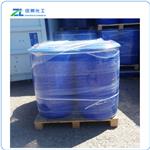Chemical Properties
Colorless, clear liquid
Uses
Methyl acetoacetate (MAA) is a starting material for the syntheses of alpha-substituted aceto- acetic esters and cyclic compounds, e.g. pyrazole, pyrimidine and coumarin derivatives.
Uses
Methyl acetoacetate is used as a chemical reagent used in the synthesis of pharmaceuticals. It participates in the Biginelli reaction, forming molecules including dihydropyrimidinones.Methyl acetoacetate (MAA) is used for the synthesis of alpha-substituted aceto- acetic esters and cyclic compounds, e.g. pyrazole, pyrimidine and coumarin derivatives.
Uses
3-Oxobutanoic Acid Methyl Ester is a chemical reagent used in the synthesis of pharmaceuticals. It participates in the Biginelli reaction, forming molecules including dihydropyrimidinones.
Application
Methyl acetoacetate (MAA) has been used for the following applications:
As a chemical reagent for organic synthesis and as a solvent for cellulose ethers;
As a chemical intermediate for organic compounds, used for the synthesis of nifedipine;
As a food additive, used as an amine protectant for synthetic sweeteners;
As a pharmaceutical raw material, used in the manufacture of antibiotics.
Definition
ChEBI: Methylacetoacetic acid is an oxo carboxylic acid.
Production Methods
Methyl acetoacetate is produced by a reaction of methyl
acetate with sodium methoxide.
General Description
A clear colorless liquid. Flash point 158°F. Denser than water and slightly soluble in water. Vapors heavier than air.
Air & Water Reactions
Very slightly soluble in water.
Reactivity Profile
Methyl acetoacetate is an ester. Esters react with acids to liberate heat along with alcohols and acids. Strong oxidizing acids may cause a vigorous reaction that is sufficiently exothermic to ignite the reaction products. Heat is also generated by the interaction of esters with caustic solutions. Flammable hydrogen is generated by mixing esters with alkali metals and hydrides
Hazard
Toxic by ingestion and inhalation.
Health Hazard
May be harmful by inhalation, ingestion, or skin absorption. Causes eye irritation. May cause skin irritation.
Safety Profile
Moderately toxic by
ingestion. A skin and severe eye irritant.
Combustible when exposed to heat or
flame. To fight fire, use foam, CO2, dry
chemical. When heated to decomposition it
emits acrid smoke and irritating fumes. See
also ESTERS.
Carcinogenicity
Not listed by ACGIH, IARC,
NTP, or California Proposition 65.




